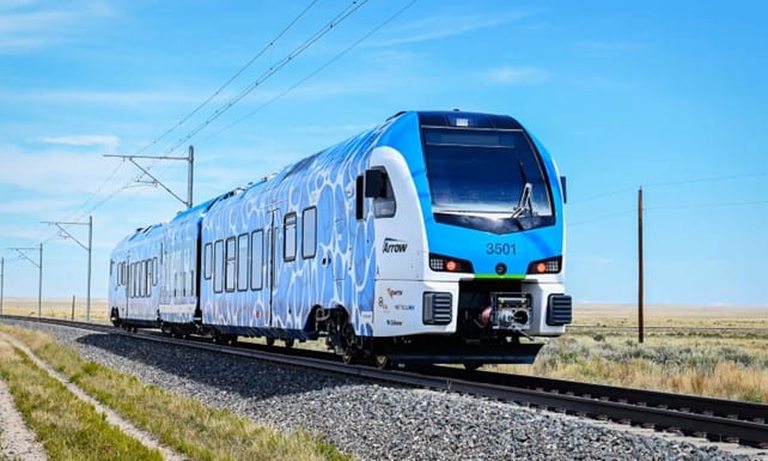https://www.lifegate.it/california-primo-treno-passeggeri-idrogeno
- |
California is also veering towards i hydrogen trains.For now, this is just a small step:a line of approximately 15 kilometers that will connect the cities of Redlands and San Bernardino, in an area that has recorded poor air quality levels for years.But the hope now is that “Zemu” – the first train in North America to use this type of engine, costing $20 million – could lead the way in clean-energy trains running on hundreds of miles of track in Southern California and the rest of the United States.All while the Los Angeles region prepares for the Olympics of 2028 which, as promised by the city mayor, will be “no car” Games;and as California ramps up investments to meet its goals of carbon neutrality to 2045.
With hydrogen fuel cells, only water vapor is emitted
For several years the San Bernardino area has been grappling with major related problems to pollution, due to a high concentration of motorways, railway yards and industrial structures;in recent months the city has not exceeded the state of the air indexAmerican Lung Association, which calculates the number of days in which pollution levels have exceeded legal limits.If from the outside "Zemu" can be confused with the other trains that circulate daily along this route, the big news is hidden inside:a hybrid system of fuel cells with hydrogen and batteries, it manages to move the convoy and power all the on-board electrical systems, without emitting any harmful substances but only water vapor.
When it enters service in early 2025, it will be the first zero-emission, hydrogen-powered passenger train in North America to meet the requirements of the Federal Railroad Administration.Currently the route connecting the cities of Redlands and San Bernardino carries just over 400 passengers a day on weekdays and over 6,000 cyclists on weekends, but the number of users is constantly growing.

The first case in the United States could lead the way
“Zemu” is a project that has its roots ten years ago, when the local transport company began to evaluate some alternatives to diesel-powered trains;in 2019 a contract was signed with the Swiss railway manufacturer Stadler to make the project concrete which will start in a few months.Beyond the immediate, inevitably reduced environmental impact, the hope is that the example of San Bernardino can be quickly replicated on a larger scale in a country, the United States, which in terms of hydrogen railway mobility is experiencing a significant delay compared toEurope.
“It's just a train – he explained Tim Watkins, the engineer who leads legislative and public affairs at the local transit authority – so he doesn't move the needle.But it demonstrates how this technology can work across more than 500 miles of Southern California's regional rail system and beyond.”In fact, something seems to be moving.The state transportation department asked Swiss manufacturer Stadler to build ten trains hydrogen powered vehicles larger than “Zemu”, destined to circulate in the Central Valley along a railway line yet to be built, between Merced and Sacramento.The first units should arrive as early as 2027 and the contract provides for the possibility of purchasing another 19 convoys.“Zemu” could really represent the beginning of something (much) bigger.
